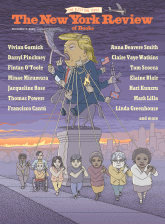In the days since the death of Justice Ruth Bader Ginsburg, the temperature of American politics, already high, has become dangerously elevated. The opportunity for Donald Trump to nominate another Supreme Court justice has once again rubbed the noses of the Democratic Party establishment in their shocking complacency of 2016. The failure to seat Merrick Garland, and Ginsburg’s own decision to delay her retirement so that her replacement could be nominated by an incoming Democratic president, now seem like relics of the long hazy summer before World War I, the political behavior of aristocrats at play, blithely unaware that their world was about to crumble around them. Half-hearted appeals to honor, precedent, and the nonexistent “McConnell rule” of delay during an election year have foundered against raw political realism, encapsulated by the right-wing blogger Matt Walsh in a Twitter post on September 19:
To be clear, I wanted McConnell to refuse to hold hearings for Garland because I didn’t want Garland on the court. I want the hearings now because I do want Trump’s pick on the court. That’s the way the game is played, you dumb whiners. It’s not “hypocrisy,” it’s just politics.
As the president and his surrogates methodically sow doubt about the integrity of the coming election, the possibility that the winner could be determined by a court with a 6–3 Republican majority opens the way for a genuine crisis of legitimacy. The idea that an election result might not represent the will of the people is profoundly destabilizing to Americans on the center-left and center-right, who have already had trouble accepting that many of the vaunted checks and balances of American democracy rely on norms of behavior easily disregarded by an administration that prefers not to observe them.
Over the years since we turned to social media as our primary news filter, we’ve come to understand the so-called silo effect, the way that both algorithms and personal choices tend to build around users information environments that reinforce their biases. This election is a contest not so much of ideologies as realities, dueling world-pictures that rely on different sources of information and are often not even visible to adherents—perhaps a better word would be “inhabitants”—of the other.
After the announcement that the killers of Breonna Taylor would not face meaningful justice, two parallel strands of anxiety-inducing coverage emerged out of Louisville. Left-leaning commentators shared video of heavily armed paramilitaries stalking the streets of the city, evidence of the growth of “Boogaloo” and race-war rhetoric on the far right. These groups have been encouraged by Trump, who, in the first presidential debate, refused to denounce white nationalism, instead exhorting the far-right street gang the Proud Boys to “stand back and stand by,” a phrase widely taken as an endorsement.
In the alternate reality, the gun-toting men in Louisville were “patriots defending their homes” and the real danger came from elsewhere. A short clip of masked protesters distributing picket signs advocating for police abolition out of a U-Haul truck has been promoted as evidence that the movement against police violence is funded and organized by sinister forces. Given that the price of an AR-15 can range from $500 to well over $2,000, and renting a 10-foot moving truck in Louisville costs $19.95 a day plus mileage, this is an argument that could convincingly be reversed, but adjudicating truth or falsity in the era of “alternative facts” is a fraught and thankless activity. People are often unaware that narratives like this, pushed out by figures with large followings, may be flat-out fabrications, and the figures may even be fabrications themselves. The term of art among social media monitors is “coordinated inauthentic behavior.” That inauthenticity combines human agency and technological amplification in a way that is often impossible to unpick. With the additional strain imposed by the pandemic, the costs in time, effort, and mental well-being of fact-checking are beyond most voters. Instead, many people are understandably trying to find comfort by retreating into their existing interpretative communities, refusing information that challenges their biases.
The experience of anxiety is almost the only thing Americans are able to agree on, and in an election cycle in which policy discussion is largely absent, much of the conversation is about the nature and causes of that anxiety. Our political debates follow the form of the pandemic debate. What is the true level of risk? What precautions should we take? The deliberate destruction of the integrity of the nation’s public health information system has taught the bitter lesson that in the absence of universally trusted sources, all facts are alternative, open to contestation. So it is with our assessment of the risks of a disputed election. How will intimidation and voter suppression affect the polls? Will mail-in ballots be fully and accurately counted? Would the president concede a loss?
Advertisement
A common format of clickbait journalism is to promise that a post contains “the truth about” something or other. We’re offered “the truth about” masks or mortgages or China. It’s a pitch that betrays this contemporary anxiety, presupposing as it does a context of lies against which the truth-telling post stands out. As we enter the last weeks of the election campaign, the performance of truth-telling is everywhere. Yet for all the heroic rhetoric, truth itself seems to be slipping ever further out of reach.



